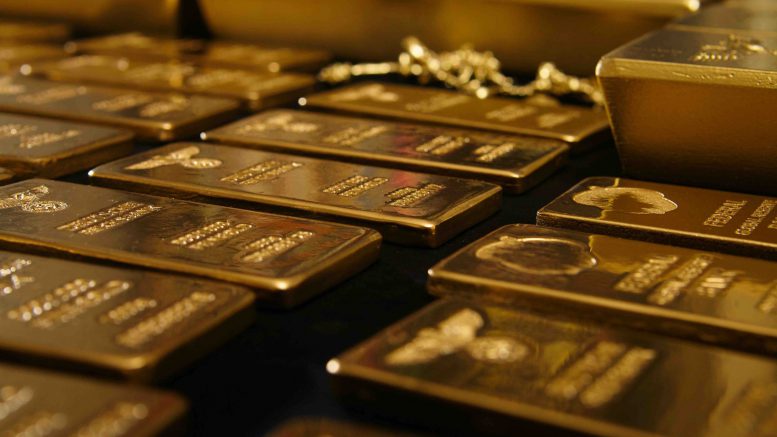Gold made history on Friday by reaching the $3,000 per oz. level for the first time, as investors continue to pile onto the safe-haven metal to seek cover from economic uncertainty sparked by U.S. President Donald Trump’s tariffs.
Spot gold hit its new record of $3,004.71 per oz. during the morning trading hours, before pulling back to $2,984.50 by the closing bell Friday.
Gold contracts in New York are just $1 short of the $3,000 mark, having hit a high of $3,017 an oz. earlier. Gold futures predict prices will continue to rise, according to the World Gold Council bellow.

Gold’s new milestone highlights the metal’s centuries-old role as a store of value in turbulent times and as a gauge of fear in markets. It breached the $1,000 mark in the aftermath of the financial crisis, passed $2,000 an oz. during the Covid-19 pandemic, and now crossed $3,000 an oz. during an unprecedented trade war.
Jewellery impact
In India, the high gold prices are impacting jewellery demand. The country’s sector accounts for 40% of total global demand according to the World Gold Council.
“Gold discounts in India widened to $39 per oz. this week, the highest level in nearly eight months, amid weaker consumer demand and jewellers reducing high-cost inventory before the end of the financial year on March 31,” BMO Capital Markets said in a note on Friday.
In the last 25 years, bullion has risen 10-fold, outperforming even the S&P 500, which quadrupled over the same period.
Gold’s rally to $3,000 an oz. also came faster than the mainstream forecasters had predicted. Over the past year, analysts have ratcheted up their gold predictions after the price moved decisively through the key milestones of $2,000 and $2,500 per ounce.
Now, some have the next major marker in sight.
“For it to hit $3,500/oz., investment demand would need to rise 10%,” Bank of America analysts led by Michael Widmer said in a note earlier this week. “That’s a lot, but not impossible.”
Before that, Goldman Sachs had already raised its gold price forecast to $3,100 by the end of 2025.
Gold bulls prevail
The aggressiveness and unpredictability of the new US government have been the most important driver of gold this year.
So far in 2025, bullion has risen by 14% despite the higher interest rates and a strong U.S. dollar, which typically would pull investors away from the safe-haven asset. Still, these headwinds were no match for the geopolitical turmoil and economic stress exacerbated by the Trump administration’s policies.
“Gold prices raced to a record high with momentum driven by elevated tariff uncertainty and bets on monetary policy easing by the U.S. Federal Reserve,” said analysts from Red Cloud Securities in a note.
The FOMO (fear of missing out) factor may have also played a role, especially as equities have failed to deliver the desired returns for investors this year.
“A lot of investors missed out when gold went through $2,400, $2,500, $2,600. We kept saying: ‘this won’t last, there’ll be a correction and it will consolidate’,” said Philip Newman, founder of consultancy Metals Focus.
“It did nothing of the sort. I think there was a sense that investors don’t want to miss out on $3,000.”
Still, when adjusted for inflation, gold remains a long way off its peak set in 1980, which equates to about $3,800 an ounce now.
Central banks’ role
Also driving the rally are global central banks that have been building up gold inventories to disburden themselves of their reliance on the greenback.
Since Russia’s invasion of Ukraine in 2022, central bank buying has doubled from about 500 tonnes a year to more than 1,000, according to the World Gold Council.
These include China, who America sees as its biggest economic rival. The Asian nation recently picked up its purchases amid record-high prices, and has now grown its gold reserves for four straight months.


Be the first to comment on "Gold makes history with $3,000 milestone"